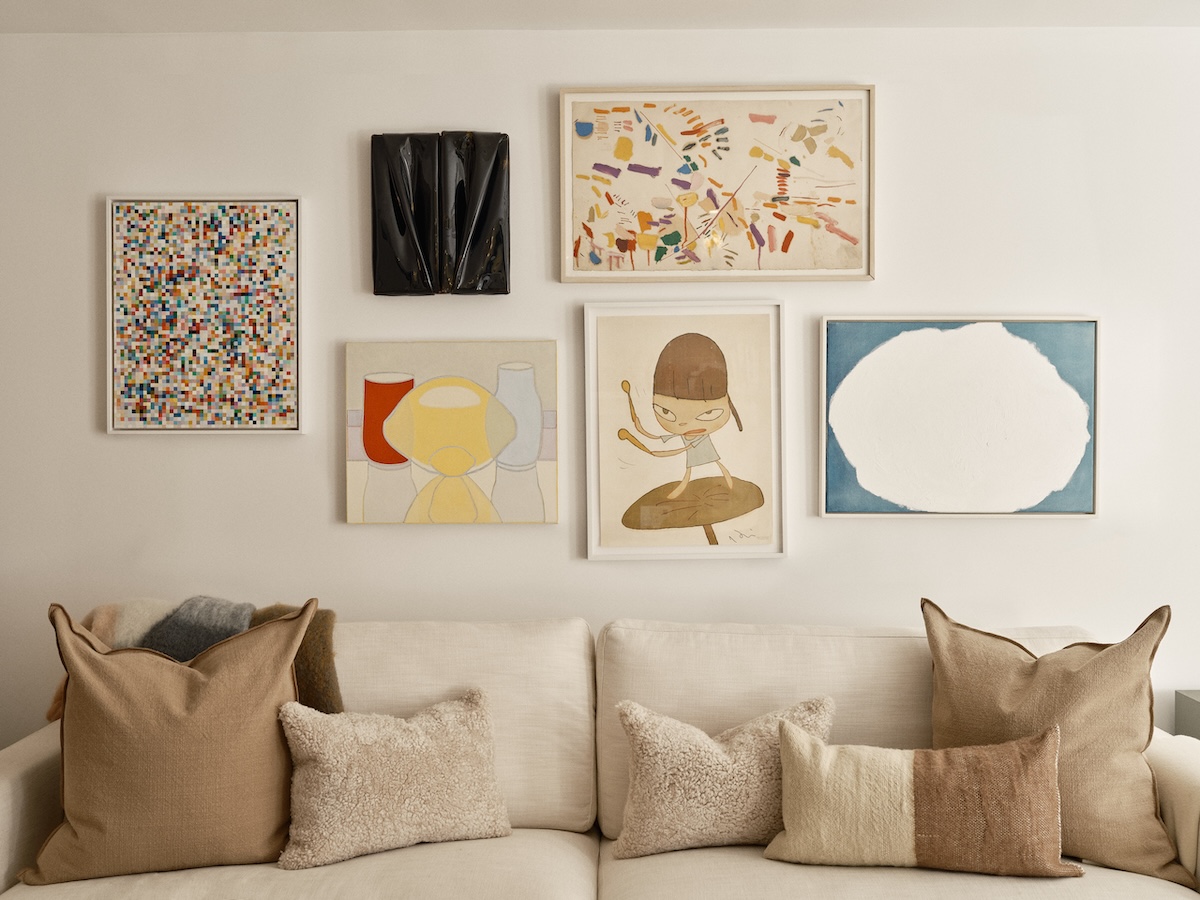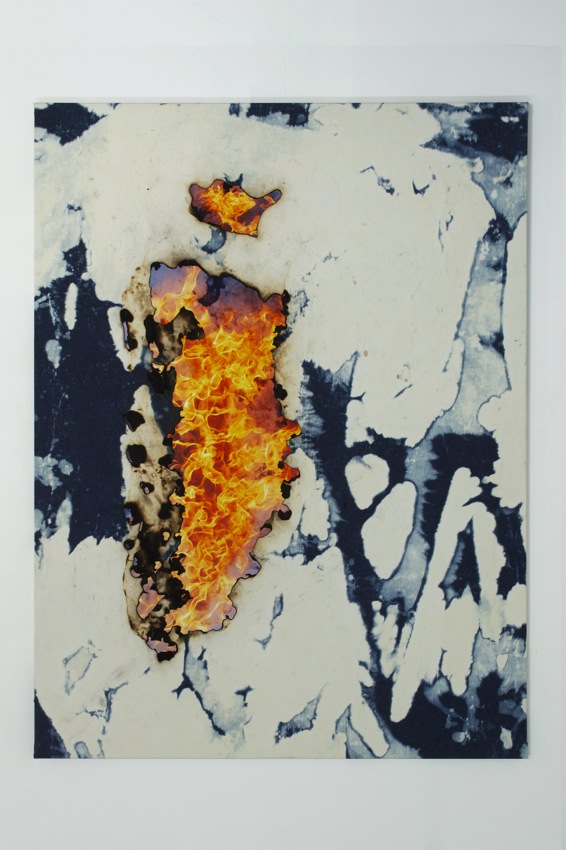The Mexican-American artist Raúl de Nieves spent his childhood in Morelia, a colonial city in central Mexico, visiting small pockets of town that were heavily influenced by artisanal craft. At nine years old, he moved to San Diego with his family—which was made up of creative professionals, such as architects and sign painters—and throughout his childhood, they inspired him to work with his hands. Today, he sources that inspiration and recalls Morelia’s rich craft culture focused on weaving and working with beads, ceramics, and copper. He is, however, open to creation of all kind, and imbues an “experience” aspect in all of his work. His work—ornate statues made of sequins and beads, and installations resembling stained glass made of paper and tape—have since been included in shows at museums like MoMA PS1 and the Whitney Museum of American Art.
“Trying to relive those memories,” he told us during a recent stu-
dio visit, “I’m visualizing and fetishizing what it is to be able to create with something really basic. My studio practice is in a basement with very basic
tools. That’s what is special about creating these experiences. You make
whatever you can with whatever is in front of you.” He spoke with Whitewall about his practice, not going to art school, and his memorable piece at the Whitney Biennial last year.
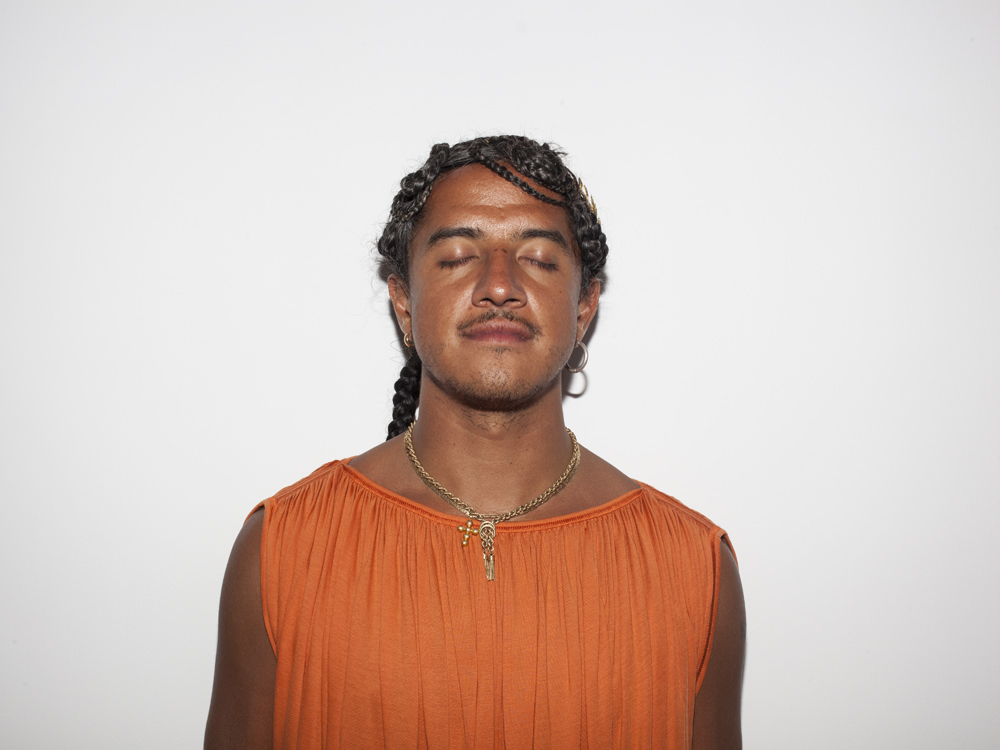
Raúl de Nieves.
Courtesy of Dio Horia.
WHITEWALL: How would you describe some of your earlier work?
RAÚL DE NIEVES: It was this evolution where I was fantasizing about what I wanted to portray. When I moved to San Diego, the thing that was the most influential was being a part of a music scene and watching people perform. I’d go to a show and think, “Wow. That person is not just a musician right now, but they have all of our attention.” We were all there for the same reason, and they were really creating an experience for us.
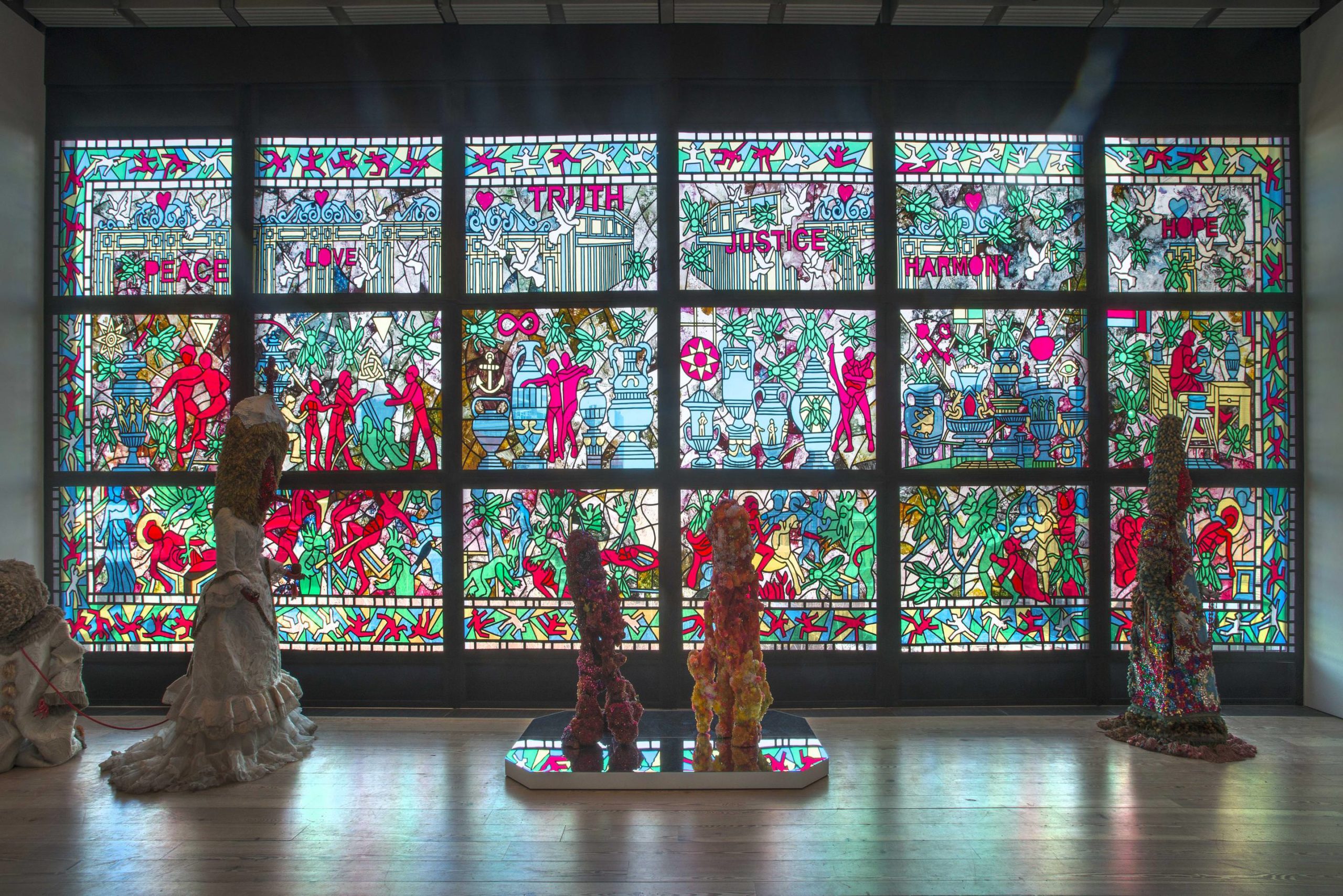
Installation beginning & the end neither & the otherwise betwixt & between the end is the
Beginning & the end, 2016 by Raul De Nieves (2017 Whitney Biennial ( March 17-June 11,
2017).
Paper, wood, glue, acetates, tape and beads,
195 x 456 5/16 in.
Collection of the Artist; courtesy Company Gallery.
Photograph Bill Orcutt
Left to right : Man’s best friend, 2016; The longer I slip into a crack the shorter my nose
becomes, 2016; UUU MEE, 2015-2016 and Somos Monstros 2, 2016
I started out painting. Moving to New York and having a studio
practice jump-started me thinking, “Okay, this doesn’t need to just fit inside a box. It can be three-dimensional.” But how do you go to the next level? You need space, and passion. My work really comes from a place where I want it to be not just something you are looking at, but something you experience. I’m creating experiences.
WW: You moved from San Diego to San Francisco with the intention of going to art school, but you didn’t end up going. Tell us a bit about how that shaped you in the long run.
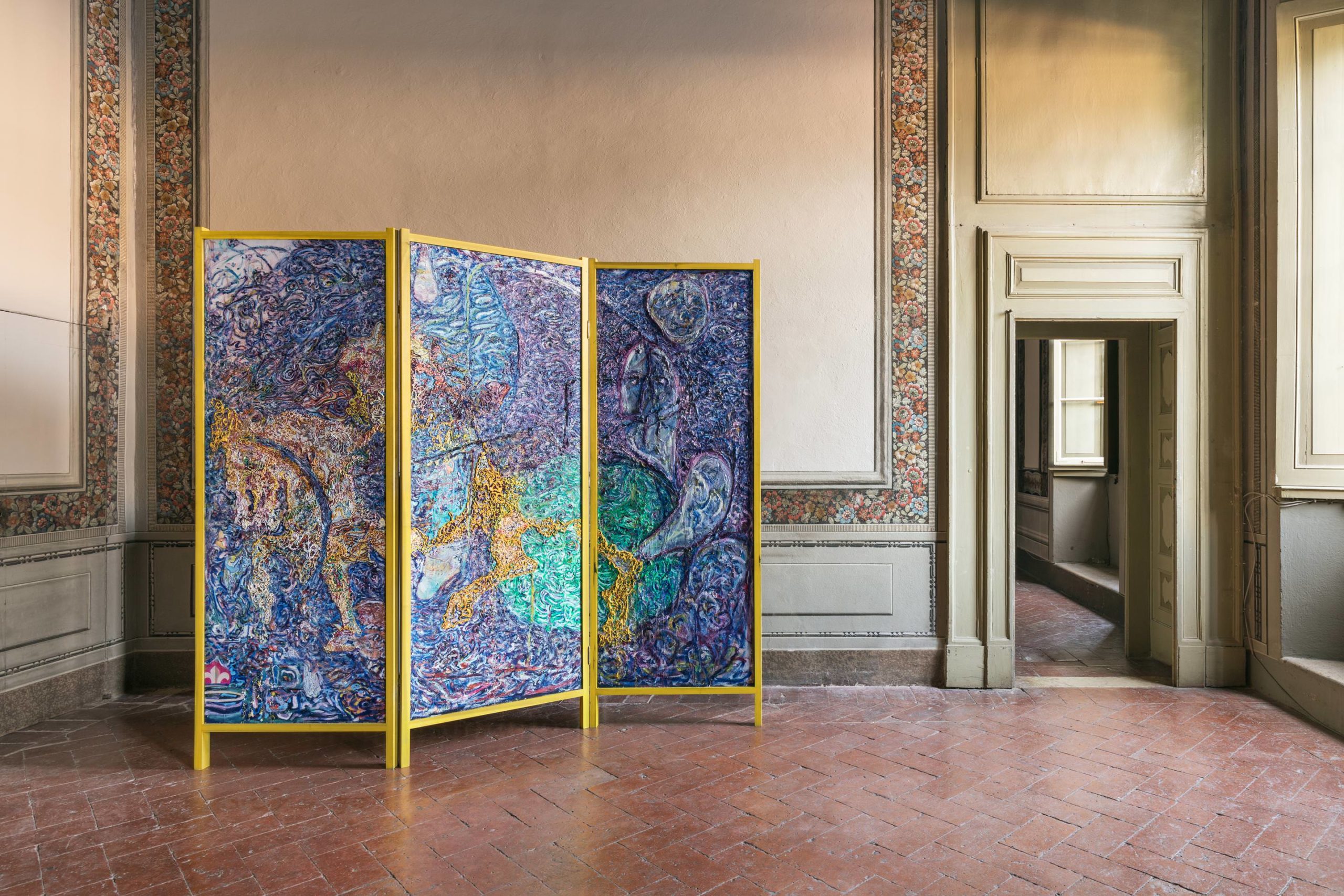
Installation view, “Who Would We Be Without Our Memories?” at Apalazzogallery, Brescia.
Photo by Delfino Sisto Legnani and Marco Cappelletti.
Courtesy of the artist and APALAZZOGALLERY
RDN: I have so much admiration for people that go to school, and I’ve been able to visit students and give lectures. I try not to ask students questions like, “What is it that you’re doing here?” but questions like, “What is it you get to learn here?”
By being open with a multifaceted practice, I’ve learned so much about what I’m trying to portray just through experiences. For instance,
Days(Ves) of Wonder (2007–14) took me seven years to make, and it was a very deep relationship that I had with this object. It was teaching me every-
thing I needed to do to make a sculpture. I wanted to make a figure that was freestanding—no armature, solid beads. I had to ask how to make it, and I found methods with the personal freedom of creating these pieces. I had to experiment and find my own mistakes and criticism within me. That’s what I feel learning is all about. It doesn’t have to be a traditional way.
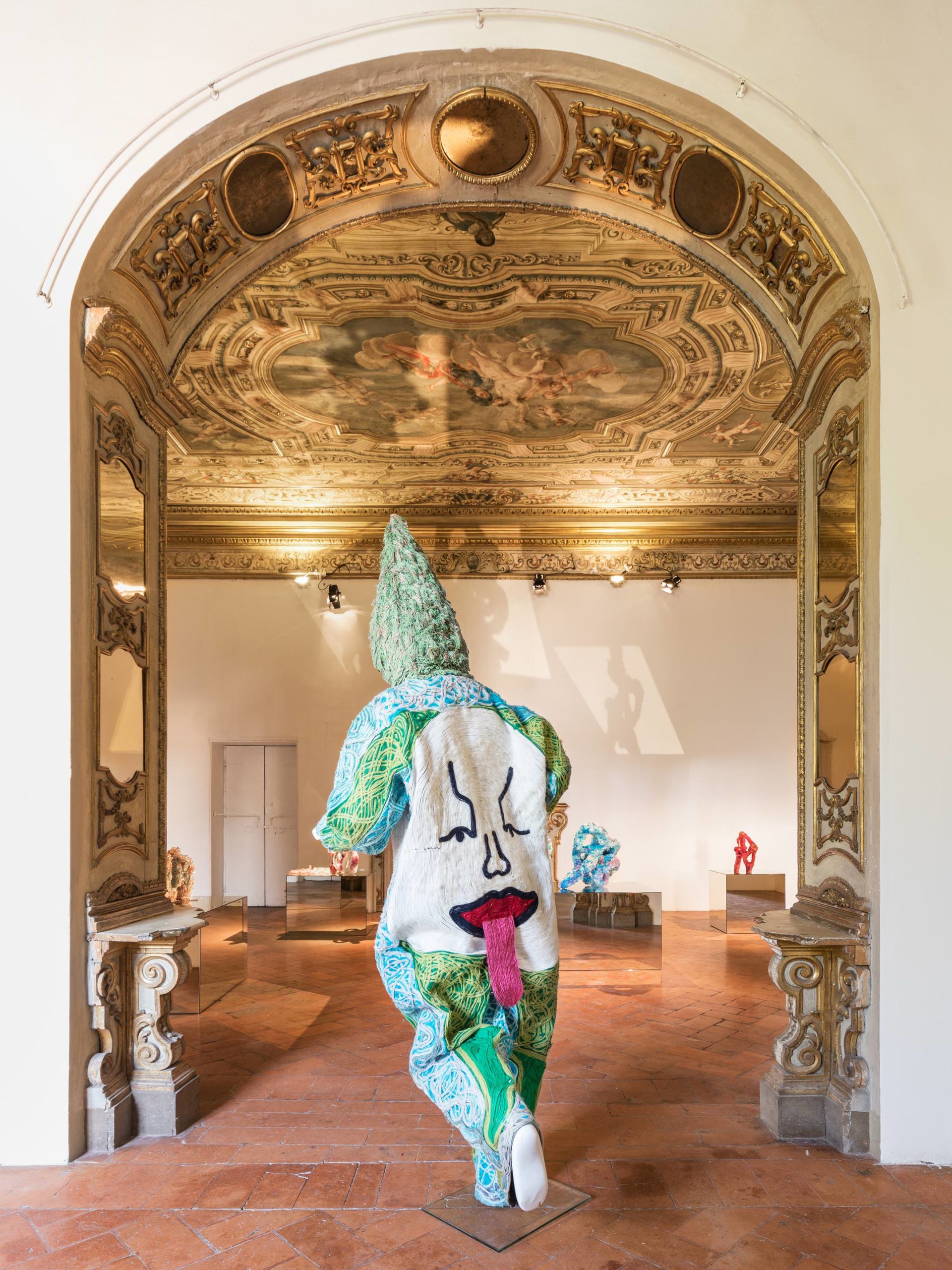
Installation view, “Who Would We Be Without Our Memories?” at Apalazzogallery, Brescia.
Photo by Delfino Sisto Legnani and Marco Cappelletti.
Courtesy of the artist and APALAZZOGALLERY
WW: What’s a piece of advice for someone who wishes to go to art school, but can’t?
RDN: You have to have a lot of patience. I’m 34, and that’s still young, but
I moved here 10 years ago and have been doing this forever. If all of these
opportunities happened to me when I was 24, I wouldn’t have been able to
do the same things that I’m doing now. It’s all about you believing. We all
deserve to have a moment or a chance. If you want to be the general manager of the coffee shop, and you’ve never held that position, you can’t just jump into it. You have to learn how to manage situations. I wouldn’t have been able to make a piece like this bead piece if I didn’t have the time to really understand what I was actually trying to do.
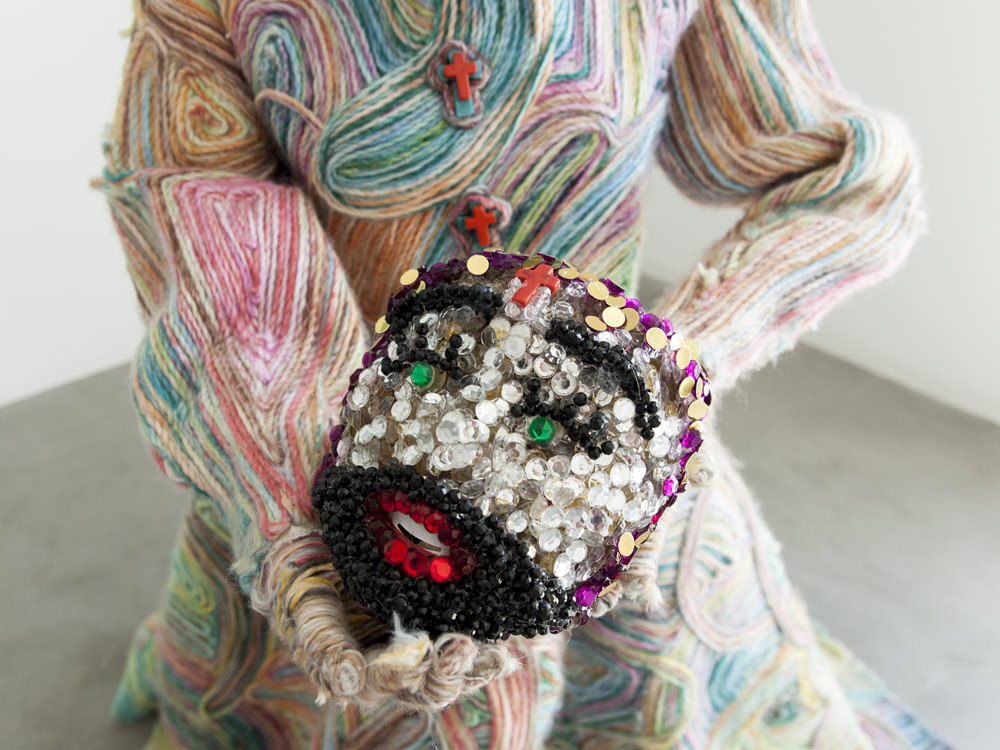
Installation view of “Thirty3” at Dio Horia Contemporary Art Platform,
on view August 25–September 30, 2017.
Courtesy of Dio Horia Contemporary Art Platform in Mykonos, Greece.
WW: You performed twice at the Whitney Museum as part of other artists’ pieces before you showed as an artist yourself last year. Tell us a bit about that journey, and about your installation in the Whitney Biennial 2017 that was later included in the museum’s permanent collection.
RDN: In 2011, I was in Xavier Cha’s Body Drama—a six-month piece where she hired over 10 performers to perform daily activities every day through the duration of her exhibition. We had to be very dramatic with who we were. The same guards that were working at the old location, now at the new location, remember my screams. I also took part in a Robert Ashley performance—an opera piece. He was one of my heroes.
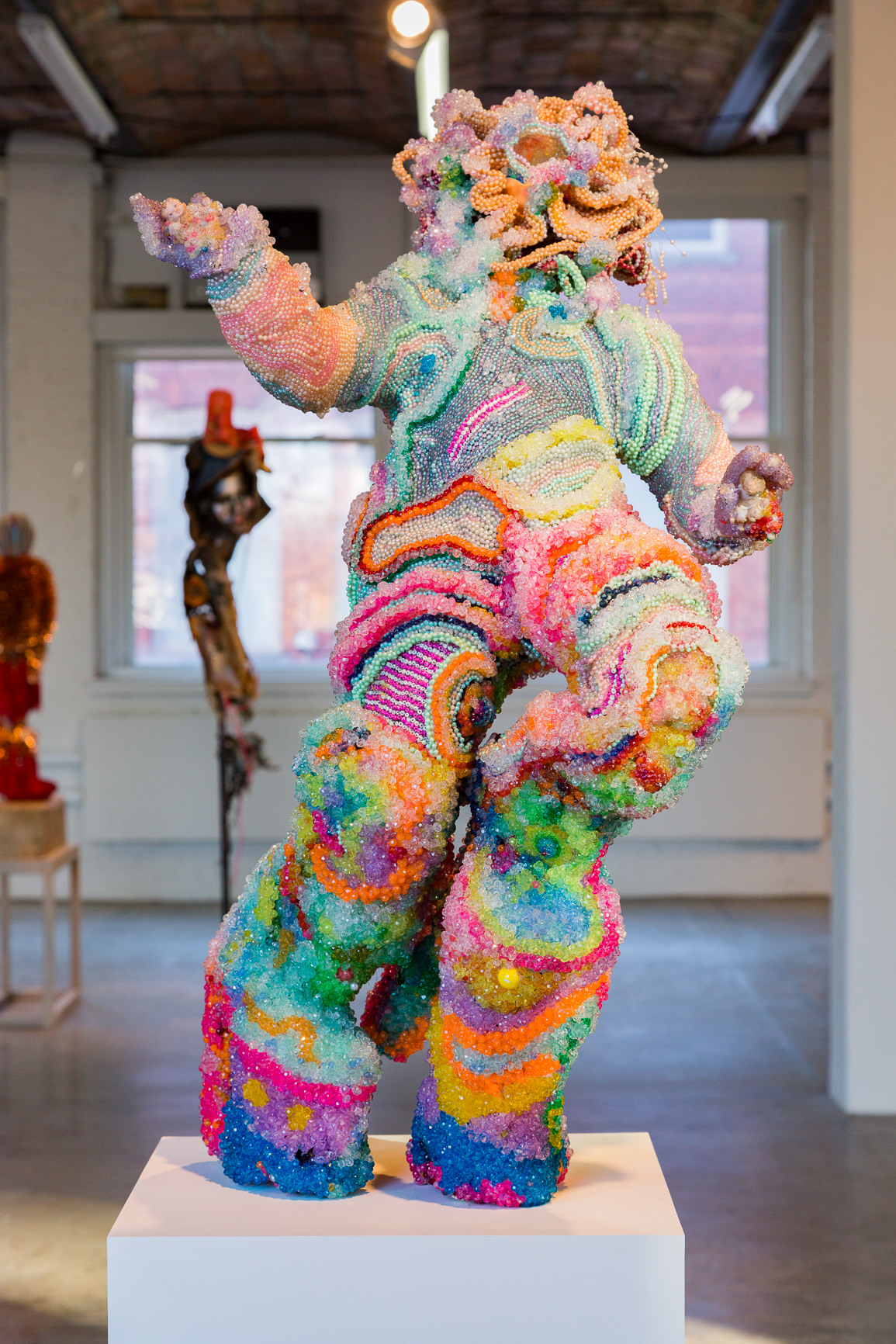
Installation view of Greater New York
on view at MoMA PS1 from October 11, 2015 to March 7, 2016.
Shown: Raúl de Nieves, Days(Ves) of Wonder (2007-14).
Image courtesy of MoMA PS1.
Photo by Pablo Enriquez.
I’ve been here for five biennials. Every time it would happen, I’d say, “It’s not me this year. It’s fine.” But it was beautiful to hear, “When’s your turn?” by the same guards at the museum that heard my screams, and when I got it, those same people were like, “Yeah!”
The curators had a certain vision of how they saw me as an artist, and they wanted my installation to have that experience aspect to it. I was thinking that the last thing I wanted to do was put a sculpture on a pedestal. I wanted to make an impact. When we got to the wall of windows, they said
that’s where they saw my art.
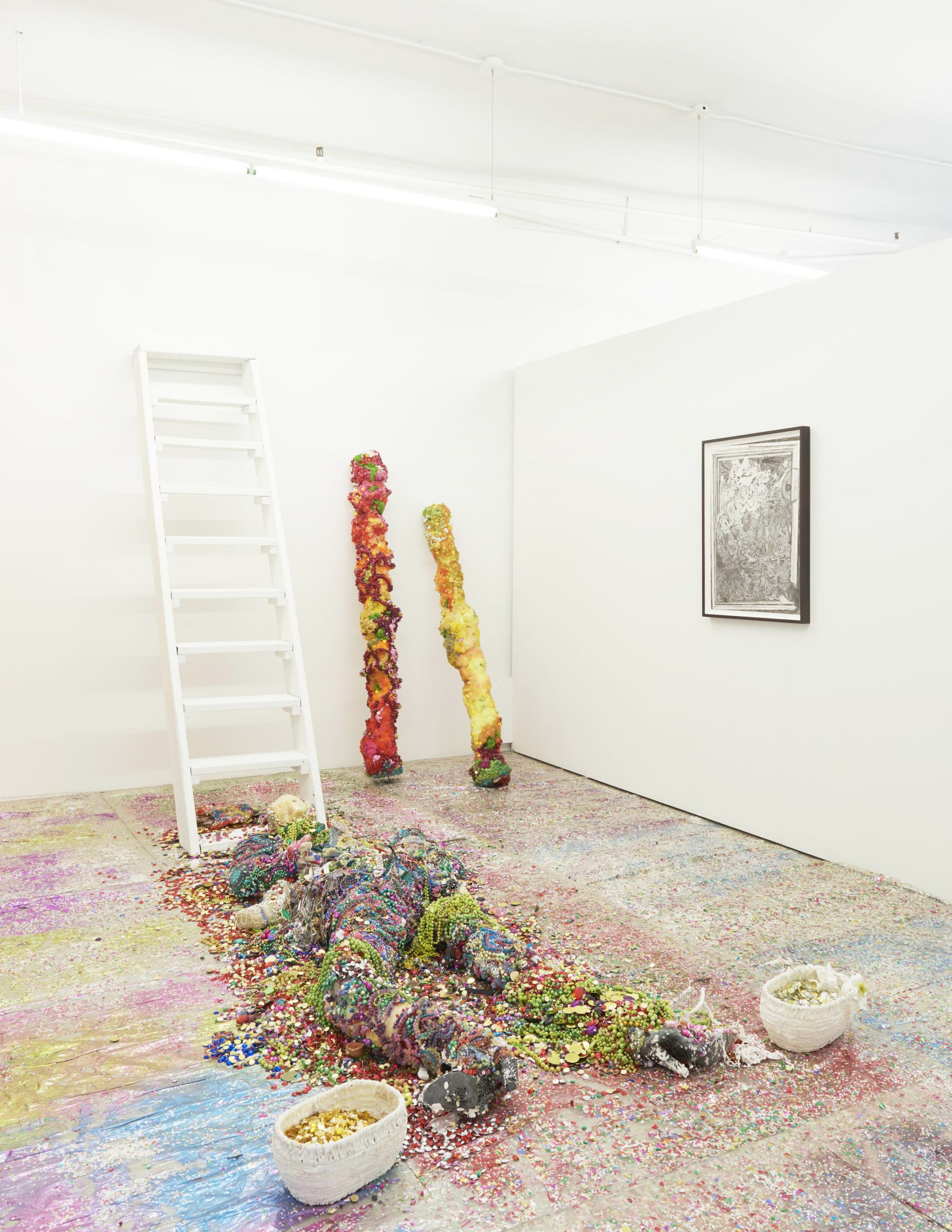
“El Rio” at Company Gallery.
Courtesy of Company Gallery and Raúl de Nieves.
When they asked me to do a stained-glass type of window the size of a billboard, there was so much into saying yes because I knew I had to actually execute it. And not just execute it, but engineer it to be a part of a
structure. That was the most exciting thing. It wasn’t just about me making
something, but about the fact that it started conversations between people at the museum and the installation team, and asking questions as to how to put it up.
WW: What was the inspiration behind that work, beginning & the end neither & the otherwise betwixt & between the end is the beginning & the end?
RDN: In the end, it’s a collage. There were six windows and each window had a compartment of three scenes—18 different panels that created this one giant image. Each scene was about five and a half feet by six feet. As a child, I had seen ways of making these replicas. In Mexico, they do paper cutouts with rice paper and make scenes, so it was kind of the same thing. I was drawing on a big piece of paper, cutting out shapes and inserting it back using gels and tape. When I was working on it, I could see the image in my head, but as a whole, I never really saw it until it went up.
It was called beginning & the end neither & the otherwise betwixt &
between the end is the beginning & the end and basically asked the questions, “How do you have a beginning to an end? How do you get to the beginning? And where does the end leave you?” That experience has opened up new beginnings. Being an artist opens up so many portals to so many worlds.
WW: What type of artist would you say you are?
RDN: I’m not trying to limit myself. I look around here and there’s all these different types of works, and they all fall into a category with a manual labor aspect. It jumps from sculpture to painting, from installation to wearable costumes and performance. There’s a revolving theme around all of these things happening, but the medium is so open. That’s the ultimate freedom.




